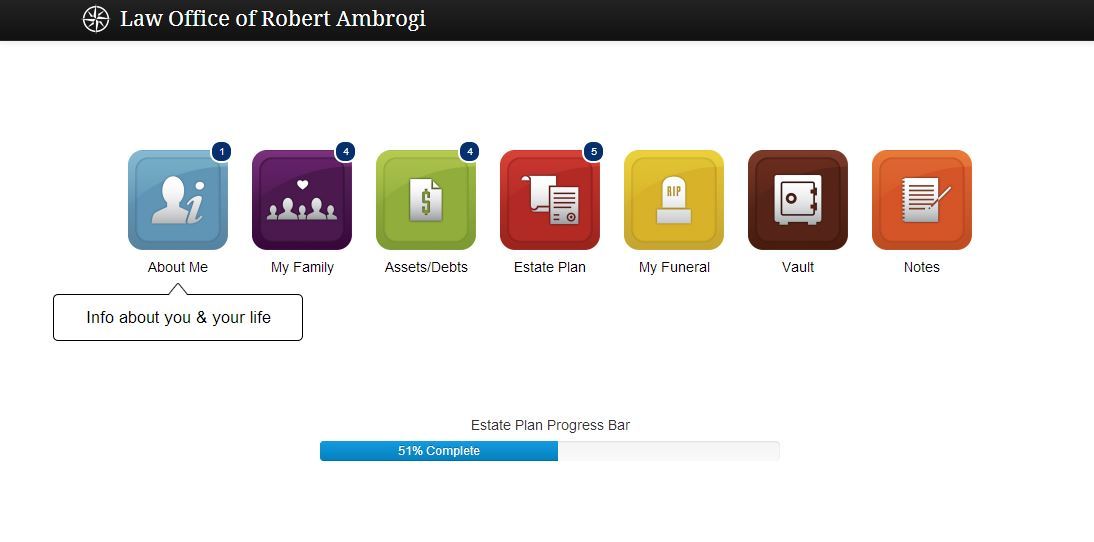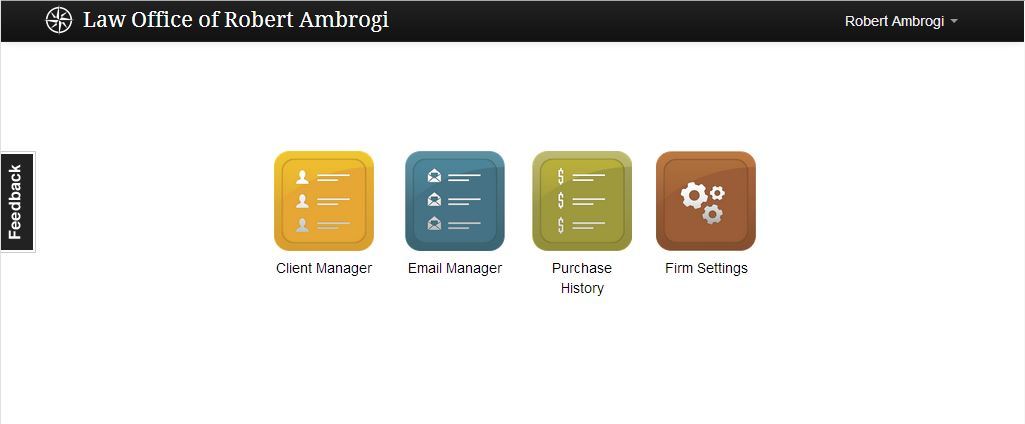You know how it goes: You sign up for a new website and you get an automatically generated email thanking you for registering. Well, when you sign up with Estate Map, you get a personal email from the company president, Joe Henderson, welcoming you and encouraging you to contact him directly if you ever have a problem. And it really is from him; reply and he will answer back in short order.
That is just one indication that Estate Map is focused on making life easier for estate planning lawyers. But it is not even the first indication. Right after you sign up, you receive two emails. One walks you through the process of logging in and setting up your account for the first time — not that this is at all complicated to begin with, but the email makes it easy.
The second email is from a demo client. Estate Map comes preconfigured with a mock client account. This lets you see your options for managing clients’ accounts, before you ever use it with an actual client. Even better, you can log in as the mock client so you can understand how it works from the client’s perspective.
So what is Estate Map? Essentially, it is a client intake and communication platform. For your clients, Estate Map serves as a portal through which they provide information about themselves and their estate-planning needs, where they store important documents and digital assets, and where they designate and communicate with proxies.
For estate-planning attorneys, it is a platform for managing your clients, for streamlining the client-intake process, for accessing clients’ essential personal and financial information, and for managing ongoing communications with clients.
What Estate Map is not is a tool for actually creating estate plans or estate planning documents. That remains the work of the lawyer.
Fast Track Client Interview
When a client logs on to Estate Map for the first time, she is prompted to complete an intake interview — which Estate Map calls a Fast Track interview. Depending on the answers she provides, Estate Map then prompts her for additional information necessary to complete her estate plan. As she fills out the forms, a progress bar shows how far along she is in the process. Of course, clients can complete this information according to their own schedules, logging on and off to add information at their convenience.
Estate Map walks the client through the questions you would expect, pertaining to family, finances, funeral preferences and the like. It also includes a “Vault” where clients can store information about their online accounts and digital assets, the locations of valuables, and the locations of critical certificates and documents. Any of these documents can be uploaded to the client’s vault as attachments.
As part of this process, the client is required to designate a proxy — someone with whom the information in Estate Map will be shared upon the client’s disability or death. Anyone designated as a proxy automatically receives an email advising of the designation and asking him or her to register with Estate Map to accept the appointment and ensure continued access. Clients can change their proxy designations at any time. Also, they can designate different proxies for different purposes — the client could designate one proxy to have access to her financial information and a different one to have access to her web and social media accounts.
Manage Clients and Emails
For the lawyer, Estate Map provides various tools for managing clients. The primary one is the Client Manager, which provides a list of clients and enables you to view all of the information and documents they have provided, as well as to monitor their progress in completing the interview.
Another tool is the Email Manager. Estate Map uses a variety of initial and recurring emails to communicate with clients and proxies and to remind them periodically to update their information. Through the email manager, you can customize the text of these message and, for reminder emails, their frequency. Thus, when a client registers with Estate Map, that triggers an initial thank you to be sent. When a proxy accepts or declines, that triggers emails notifying the lawyer and the client. Every so often, clients and proxies receive emails reminding them to update their information.
Lawyers can customize the interface to a limited degree. When a client logs in, the page header will show your law firm name, not Estate Map branding. If you have a logo, you can add that. The URL your client sees will show up as http://YOURNAME.estatemap.com. You can specify whatever name you choose to appear there. You can also add a link or a logo on your website that enables clients to log in directly from your site.
At any time, you can download a backup copy of all of your information or all of a specific client’s information. The backup copy can be downloaded in either Word or PDF format.
For security, Estate Map uses three-step log-in verification. Each time you log in, you will need to provide your user name, answer a security question, and then provide your password.
Estate Map features a design that helps make it intuitive to use. Whether you log in as the lawyer or client, all of the options are presented as iPhone-like icons. For clients, numbers above each icon serve as reminders of items remaining to be completed. By clicking any icon, they are taken to the subsection where they can see what they’ve listed so far and add new information.
Priced by the Client
Estate Map is priced by the client. There is no cost to register and try it out and every new registrant is allowed to add one client for free. Thereafter, for each client you add, you pay a subscription fee of $69. That subscription lasts for five years and keeps that client’s account active throughout that period.
I am not an estate planning lawyer. However, Estate Map’s founder and president, Joe Henderson, is a lawyer who actually practices estate planning law. The company’s vice president of communications is Sam Glover, well known to many as the editor of Lawyerist.com. That combination provides reassurance that this is a site developed with an understanding of what estate planning lawyers need.
From what I have seen, this is a well designed and easy to use site, for lawyers and clients alike. For lawyers, not only does it simplify client intake, but it also has the added benefit of automating reminders and other communications to clients. For clients, it not only makes it easy for them to provide their estate-planning information, but it also serves as a repository for their digital assets and Internet passwords. Given these features, the price — which works out to less than $14 a year per client — seems more than fair.
[Please note that Estate Map has been a paid advertiser on this blog.]
 Robert Ambrogi Blog
Robert Ambrogi Blog
